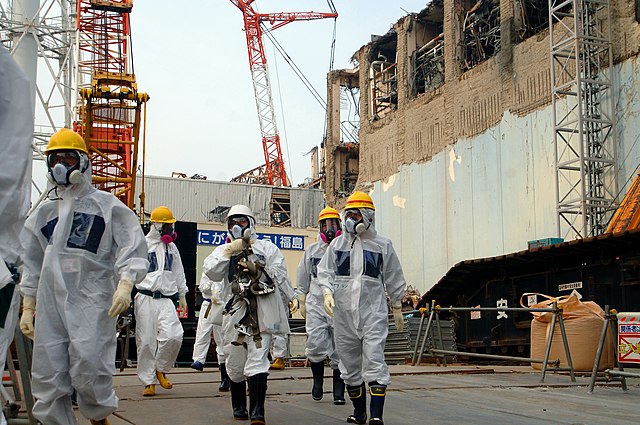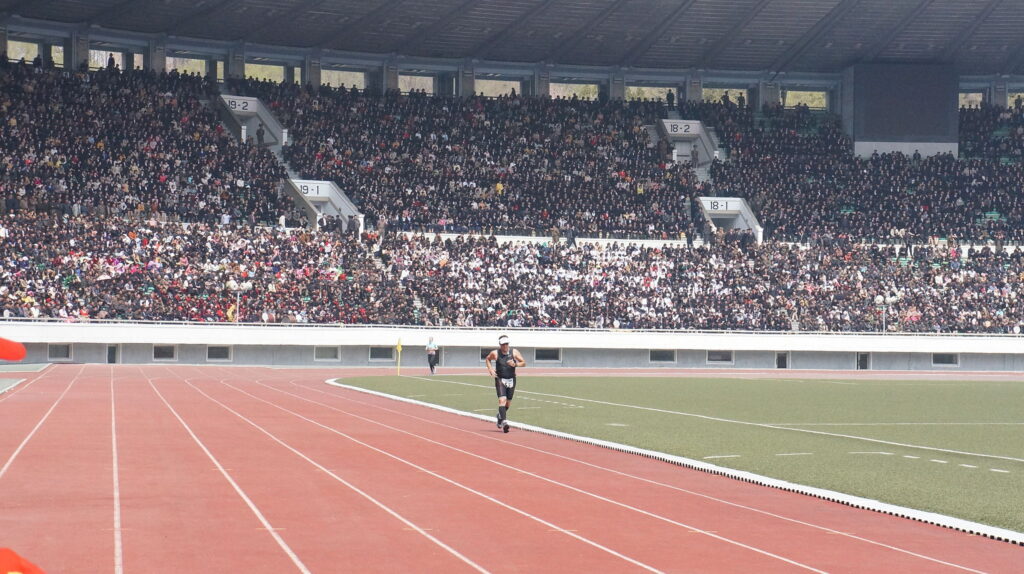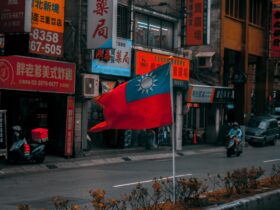By Alicia Liu and Ngai Yeung
BEIJING AND HONG KONG — On April 13, Japan announced that it would release around 1.25 million tons of nuclear wastewater into the Pacific Ocean within two years, a process that is expected to last for 40 years. Although the Japanese government claimed that the wastewater has been treated and will have minimal risk for human health, the plan has sparked outcry both at home and abroad.
Japan has been dealing with the effects of the Fukushima Daiichi nuclear accident for the last decade. On March 11, 2011, an earthquake and the following tsunami hit the prefecture of Fukushima, located on the eastern coast of Japan. The disaster led to the meltdown of three of the six reactors at the largest nuclear power plant in the region, causing explosions and the leak of radioactive substances into the atmosphere and the ocean.
Japan started decommissioning the nuclear plant after the disaster, and an average of 170 tons of water are pumped into the broken reactors daily to prevent the melted cores from overheating. During the process, the water has been contaminated by harmful radioactive substances from the core and then stored within the vessels near the power plant. Although more than 1,000 vessels are being used to contain the wastewater at this point, it is estimated that there will be no extra room for storage by 2022.
Feeling the imminent challenge, the Japanese cabinet had started a discussion on releasing the wastewater into the ocean five years ago. Some of the proposed solutions include evaporating the wastewater and releasing them into the ocean. The government eventually adopted the latter solution as it is believed to be the more reliable option.
Responding to the decision, Japanese Prime Minister Yoshihide Suga, claimed that the government would “take every measure to absolutely guarantee the safety of the treated water and address misinformation.”
The operator of the Fukushima nuclear power plant, Tokyo Electric Power Company Holdings Inc. (TEPCO), uses an advanced liquid processing system (ALPS) to treat the radioactive wastewater and minimize the radioactivity. TEPCO plans to dilute tritium, a harmful radioactive isotope in the wastewater, to fewer than 1,500 becquerels in every liter of water. The figure is well below the national standard of 60,000 becquerels of tritium per liter.
Yet, many in Japan have objected. A nationwide survey conducted by The Asahi Shimbun, a Japanese national newspaper, reported that 55% of respondents opposed the plan, compared to 32% that supported it. On April 13, protestors gathered around governmental buildings in Tokyo and Fukushima to show their disapproval of the government’s decision to release treated wastewater into the ocean.
Several environmental groups also voiced their concerns about whether the discharged wastewater is safe enough. Friends of the Earth Japan pointed out that the government has not been candid with the details of how to treat radioactive elements other than tritium. Meanwhile, United Nations experts noted that the ALPS is not sufficient enough to remove all radioactive elements in most nuclear wastewater. The experts claimed that “[a]first application ALPS failed to clean the water below regulatory levels and there are no guarantees that a second treatment will succeed.”
The pushback is particularly strong in the fishing industry, where members are afraid that the release of treated, radioactive wastewater will still turn customers away from the Japanese seafood manufactured in the area. Their worries are not unsubstantiated, as 15 countries and regions have been restricting the import of Japanese fishery and agricultural products ever since the Fukushima nuclear disaster in 2011.
In February, Japan held back on shipments of black rockfish from the Fukushima Prefecture because the amount of radioactive cesium detected was five times the national standard. Even though the release of nuclear wastewater equates to a certain amount of economic losses and environmental concerns, the impacts only pertain to certain areas and limited groups of people.
Japan’s plan hasn’t gone unnoticed by its neighbors either. China has condemned Japan for being “highly irresponsible” by endangering public health, noting that “the oceans are mankind’s shared property.” South Korea called the plan “utterly intolerable” and “one-sided”, and threatened to file a case with the International Tribunal for the Law of the Sea. Russia, North Korea, Taiwan and the Philippines have expressed similar concerns.
On the contrary, the International Atomic Energy Agency (IAEA) and the United States have backed the plan and called it safe.
“In this unique and challenging situation, Japan has weighed the options and effects, has been transparent about its decision, and appears to have adopted an approach in accordance with globally-accepted nuclear safety standards,” a statement from the U.S. Department of State read.
The support came a few days before Suga was scheduled to meet with President Biden to strengthen the partnership between the two nations. However, the United States has not lifted its ban on Fukushima food imports, which has been in place since 2011.
Still, the Japanese government insists that the plan is safe and scientifically sound. They also pointed out their neighbors’ hypocrisy: South Korea’s Wolseong Nuclear Power Plant and China’s Daya Nuclear Power Plant both have a history of releasing tritium into the ocean. Despite this, both China and South Korea — along with neighboring countries — likely feel domestic pressure to take a strong stance against Japan’s plan, partly because the Fukushima disaster is so etched into regional memory.
Whether their worries are rational or not, many people in the region “are going to be very, very anxious about what would happen if this radioactive material came into our near seas and contaminated our resources,” Eunjung Lim, an associate professor of international relations at Kongju National University in South Korea, told The New York Times.
China and South Korea have been the most vocal against Japan’s plans. This is not surprising given the countries’ proximity to the island; but the distrust is underscored by historical and political conflicts.
TEPCO’s history of scandals has long caused it to lose trust both domestically and abroad. South Korea and China further take issue with the Japanese government behind TEPCO, whether it’s due to ongoing territorial disputes in the South China Sea, or historical grievances that date back to World War II.
Lately, South Korea has dialed down their complaints and struck a more conciliatory tone, saying that they won’t oppose the plan if Japan abides by IAEA standards. This may be due to an unwillingness to sacrifice bilateral ties, as Japan is a valuable trading partner and market. Chinese officials, on the other hand, have kept up an aggressive stance, maintaining its years-long ban on certain imports from Fukushima and even daring Japanese officials to drink the treated wastewater. Unless they impose further economic sanctions, Japan is not likely to change its course.
Nevertheless, in the face of such intense domestic and regional pushback, Japan would not only have to navigate the scientific and technological challenges of releasing its nuclear wastewater, but ensure transparency, reestablish trust and manage good public relations regarding the plan both at home and abroad.







